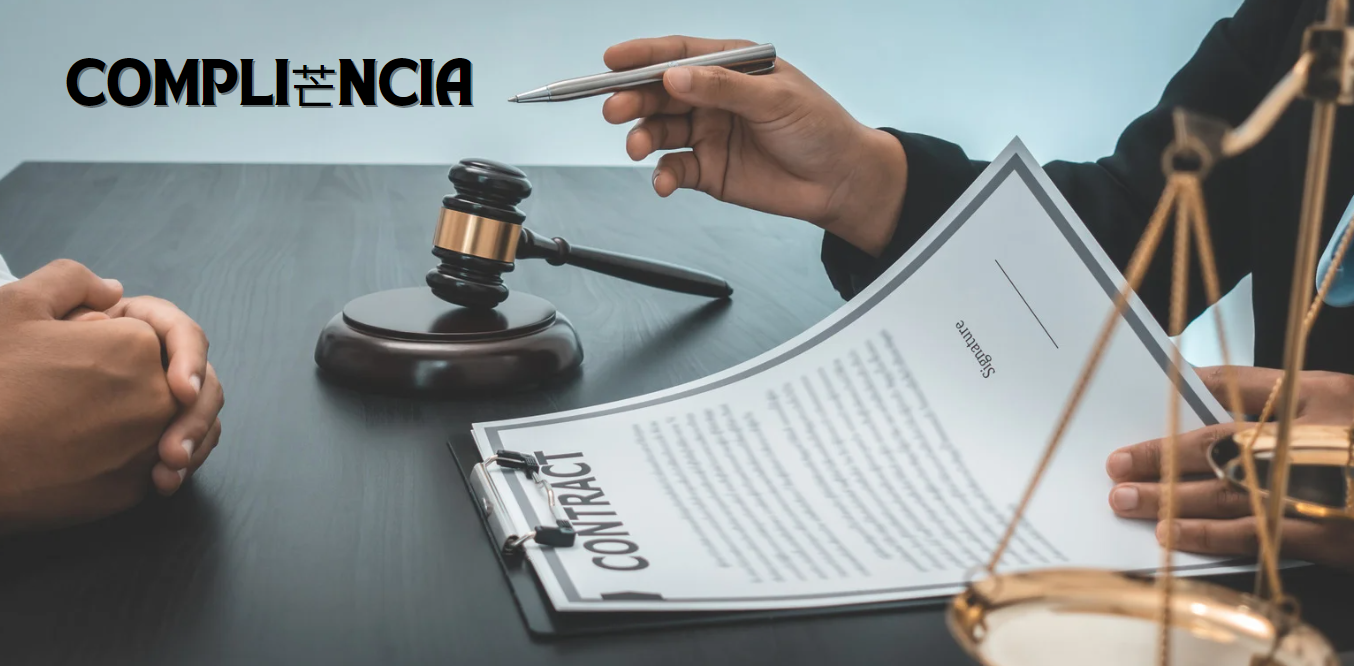Contents
Introduction to compli芒ncia
In today’s complex regulatory environment, the term “compli芒ncia” (Portuguese for “compliance”) has gained significant importance. It encompasses a broad spectrum of practices, laws, and guidelines designed to ensure that organizations adhere to legal and ethical standards.
This article explores the concept of compli芒ncia, its significance in various industries, and how businesses in the USA can effectively implement compliance measures.
What is compli芒ncia?
compli芒ncia refers to the process of ensuring that a company or organization complies with applicable laws, regulations, standards, and internal policies. It involves a set of activities and procedures aimed at preventing, detecting, and responding to any breaches or violations. While the term originates from Portuguese-speaking countries, its principles are universally applicable, especially in the context of global business operations.
The Importance of compli芒ncia
Legal and Regulatory Requirements
In the United States, compliance is crucial due to the myriad of federal, state, and local regulations governing various industries. For instance, financial institutions must adhere to regulations set forth by the Securities and Exchange Commission (SEC) and the Financial Industry Regulatory Authority (FINRA). Similarly, healthcare providers must comply with the Health Insurance Portability and Accountability Act (HIPAA).
Risk Management
Effective compli芒ncia helps organizations mitigate risks associated with legal liabilities, financial penalties, and reputational damage. By adhering to established guidelines, companies can avoid costly legal battles and ensure the longevity of their business operations.
Enhancing Organizational Integrity
Implementing a robust compliance program fosters a culture of integrity and ethical behavior within an organization. It promotes transparency, accountability, and responsible conduct, which are essential for maintaining stakeholder trust and confidence.
Key Components of a compli芒ncia Program
Regulatory Framework
A well-designed compli芒ncia program starts with understanding the relevant regulatory framework. This includes identifying applicable laws, regulations, and industry standards. For businesses operating internationally, it is crucial to stay abreast of regulations in different jurisdictions.
Risk Assessment
Conducting a thorough risk assessment helps identify potential compliance risks and vulnerabilities. This involves evaluating business operations, processes, and controls to determine areas that require attention.
Policies and Procedures
Developing clear and comprehensive policies and procedures is a fundamental aspect of compliance. These documents outline the organization’s commitment to compliance, provide guidelines for employees, and establish protocols for reporting and addressing violations.
Training and Education
Regular training and education programs are essential for ensuring that employees understand their compliance obligations. Training sessions should cover relevant regulations, company policies, and ethical standards.
Monitoring and Auditing
Continuous monitoring and auditing are vital for assessing the effectiveness of the compliance program. This involves reviewing compliance practices, conducting internal audits, and addressing any discrepancies or issues that arise.
Reporting and Response
A robust compli芒ncia program includes mechanisms for reporting and responding to compliance issues. This includes establishing channels for employees to report concerns, investigating reported violations, and taking appropriate corrective actions.
Industry-Specific Compliance Considerations
Financial Services
In the financial services industry, compliance is critical due to the sector’s strict regulatory environment. Financial institutions must adhere to regulations related to anti-money laundering (AML), know your customer (KYC), and data protection.
Healthcare
Healthcare providers face unique compliance challenges, particularly related to patient privacy and data security. Compliance with HIPAA and other healthcare regulations is essential for protecting patient information and ensuring quality care.
Manufacturing
Manufacturers must comply with regulations related to product safety, environmental protection, and labor standards. Adhering to standards set by agencies such as the Occupational Safety and Health Administration (OSHA) and the Environmental Protection Agency (EPA) is crucial for maintaining operational integrity.
Emerging Trends in compli芒ncia
Technology Integration
The integration of technology into compliance programs is becoming increasingly prevalent. Tools such as compliance management software, data analytics, and artificial intelligence (AI) can enhance the efficiency and effectiveness of compliance efforts.
Globalization
As businesses expand globally, managing compliance across multiple jurisdictions presents new challenges. Companies must navigate diverse regulatory environments and ensure that their compliance programs are adaptable to different legal requirements.
Data Privacy
With the growing emphasis on data privacy, organizations must comply with regulations such as the General Data Protection Regulation (GDPR) in Europe and the California Consumer Privacy Act (CCPA). Protecting personal data and ensuring transparency in data practices are critical for maintaining consumer trust.
Best Practices for Implementing compli芒ncia
Establish Clear Leadership
Effective compliance programs require strong leadership and commitment from top management. Executives and managers should actively support and promote compliance initiatives within the organization.
Foster a Compliance Culture
Creating a culture of compliance involves embedding ethical behavior and compliance practices into the organization’s values and operations. This includes encouraging open communication, providing resources for compliance, and recognizing employees who demonstrate a commitment to compliance.
Stay Informed
Keeping up-to-date with changes in regulations and industry standards is essential for maintaining compliance. Regularly review and update policies and procedures to reflect new developments and emerging trends.
Engage in Continuous Improvement
A successful compliance program is dynamic and adaptable. Continuously assess and improve compliance practices based on feedback, audits, and evolving regulatory requirements.
FAQs About compli芒ncia
What is the difference between compli芒ncia and compliance?
“compli芒ncia” is the Portuguese term for “compliance.” Both terms refer to the practice of adhering to laws, regulations, and standards, but “compli芒ncia” is used primarily in Portuguese-speaking contexts.
Why is compli芒ncia important for businesses?
compli芒ncia is crucial for businesses to avoid legal penalties, manage risks, and maintain a positive reputation. It ensures that organizations operate within legal and ethical boundaries, which is essential for long-term success.
How can small businesses implement a compli芒ncia program?
Small businesses can implement a compli芒ncia program by starting with a thorough understanding of relevant regulations, developing clear policies and procedures, providing employee training, and conducting regular monitoring and audits. Seeking guidance from compliance experts can also be beneficial.
What role does technology play in compli芒ncia?
Technology plays a significant role in compli芒ncia by automating compliance processes, enhancing data analysis, and improving monitoring and reporting. Tools such as compliance management software and AI can streamline compliance efforts and increase efficiency.
How can organizations ensure their compli芒ncia program is effective?
Organizations can ensure their compli芒ncia program is effective by establishing clear leadership, fostering a compliance culture, staying informed about regulatory changes, and engaging in continuous improvement. Regular audits and assessments can help identify and address any gaps or issues.
Conclusion
compli芒ncia is a vital aspect of modern business operations, ensuring that organizations adhere to legal and ethical standards.
By understanding the key components of a compliance program, industry-specific considerations, and emerging trends, businesses can effectively manage compliance and mitigate risks. Implementing best practices and leveraging technology can further enhance the effectiveness of compliance efforts, ultimately contributing to the success and integrity of the organization.







